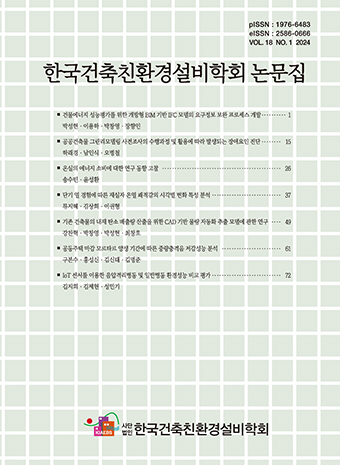Research Article
Abstract
References
Information
Satish, U., Mendell, M.J., Shekhar, K., Hotchi, T., Sullivan, D., Streufert, S., Fisk, W.J. (2012). Is CO2 an indoor pollutant? Direct effects of low-to-moderate CO2 concentrations on human decision-making performance. Environmental health perspectives, 120(12), 1671-1677.
10.1289/ehp.110478923008272PMC3548274- Publisher :Korean Institute of Architectural Sustainable Environment and Building Systems
- Publisher(Ko) :한국건축친환경설비학회
- Journal Title :Journal of Korean Institute of Architectural Sustainable Environment and Building Systems
- Journal Title(Ko) :한국건축친환경설비학회논문집
- Volume : 13
- No :6
- Pages :527-535
- Received Date : 2019-11-18
- Revised Date : 2019-12-04
- Accepted Date : 2019-12-04
- DOI :https://doi.org/10.22696/jkiaebs.20190045




 Journal of Korean Institute of Architectural Sustainable Environment and Building Systems
Journal of Korean Institute of Architectural Sustainable Environment and Building Systems








